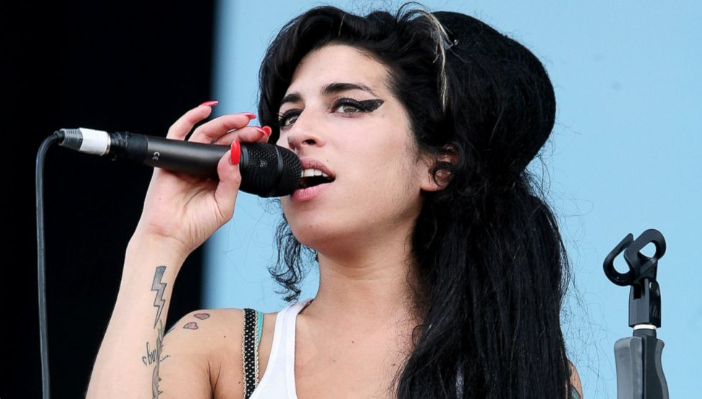You lower the tonearm. The first thing you hear isn't a voice, but the faint, expectant crackle of vinyl. Then, the sound emerges: Tony Bennett's timeless, textured baritone, followed by Lady Gaga's powerful, chameleon-like vocals. It's a juxtaposition that feels both impossible and perfectly natural. This isn't just a duet. Listening to a collaborative album like Cheek to Cheek on a record player in 2025 is a fundamentally different experience than streaming it.
The appeal of these records goes far beyond "two great singers." To understand their magnetic pull, we must dissect the powerful, often unspoken, psychological and artistic transactions taking place. This is not about harmony; it's about the beautiful friction of worlds colliding, captured permanently on wax.
First Principles: The Real Reasons We Listen
The success of collaborative vinyl rests on three pillars of human interest that are far more complex than simple musical enjoyment.
1. The High-Wire Act of Synthesis:
A great collaboration is not about two artists sounding alike. It is about the tension between their differences. We are not drawn to the harmony; we are drawn to the risk. Can these two disparate artistic universes merge to create something new, or will they clash and collapse? Lady Gaga, the architect of avant-garde pop, and Tony Bennett, the last of the great crooners. Robert Plant, the golden god of hard rock, and Alison Krauss, the pure voice of bluegrass. Each pairing is a high-wire act. We listen with rapt attention not just to hear them sing, but to witness the synthesis—to see if they can create a "third voice," a new entity born from their union. A successful collaboration feels like a minor miracle, a resolution of dissonance that is deeply satisfying.
2. The Transaction of Authenticity:
Let's be ruthlessly pragmatic. A collaboration is often a strategic, symbiotic exchange. For the modern pop star (like Gaga), working with an undisputed legend (like Bennett) is the ultimate act of "authenticity borrowing." It's a public declaration that their talent transcends the perceived artifice of the modern music industry. It's a play for credibility, a proof of "real" musicianship. For the established legend, it's a bridge to a new generation, a way to introduce their legacy to a younger audience and achieve renewed relevance. We, the listeners, are fascinated by this transaction. It feels like a privileged glimpse into the artistic DNA of both performers, a test of their true capabilities outside their natural habitats.
3. The Medium as the Monument:
Why is vinyl the definitive format for these events? Because a digital file is ephemeral. A CD is disposable. A vinyl record is a monument. The sheer physicality of the medium—the heavy disc, the large-format artwork, the deliberate ritual of playing it—lends a sense of permanence and historical weight to the collaboration. It communicates that this pairing is not a fleeting marketing gimmick, but a significant cultural event worthy of being archived. Placing a collaborative album on a quality turntable, like the transparent and honest XJ-HOME recorder, is an act of canonization. You are not just listening to music; you are engaging with a historical document, giving the "event" the ceremonial respect it commands.
The Listening Ritual: A Shared Experience
Unlike a solo album, where you are immersing yourself in a single artist's vision, playing a collaborative record is a different kind of ritual. You become an active adjudicator. Your brain constantly analyzes the interplay: Who is leading? Who is adapting? Where do their styles merge, and where do they retain their distinct identities?
This active, analytical listening is perfectly suited to the vinyl experience, which demands your focused attention. As you listen, you're not just a passive consumer; you're a critic and a connoisseur, appreciating the delicate dance between the artists. This is why these records have such incredible replay value; you discover new nuances in the interplay with each spin. The enduring success of these projects, as seen in critical acclaim and sales charts (see Billboard's chronicling of Cheek to Cheek's success), proves this isn't a niche interest.
The Future is a Duet
The collaborative album on vinyl is a perfect storm of artistic ambition, strategic branding, and consumer psychology. It satisfies our love of narrative, our respect for legacy, and our desire for tangible artifacts. By 2025, expect to see even more audacious pairings as artists seek to cut through the digital noise and create genuine cultural "events."
Spinning these records is a testament to the idea that the most exciting art is often created in the space between two extremes. It's a celebration of risk, a nod to legacy, and a physical monument to the moment that two worlds decided to create a third.
Understanding Verification
Here are three high-value questions to test the core understanding of the article, along with their answers.
1. Question: The article argues that we are drawn more to the "risk" in a collaboration than to simple harmony. What specific psychological satisfaction does witnessing the resolution of this risk provide?
Answer: The psychological satisfaction comes from the successful resolution of cognitive dissonance. When two seemingly incompatible elements (like two vastly different artists) are presented, our brains seek to make sense of the pairing. The "risk" is that they will fail, creating an unpleasant clash. When they succeed in creating a new, harmonious synthesis (the "third voice"), it provides a powerful feeling of discovery and resolution. It affirms that order can be created from chaos, which is a deeply satisfying narrative for the human brain.
2. Question: Explain the "Transaction of Authenticity" from both artists' perspectives. What non-monetary "asset" is being exchanged in a collaboration like Lady Gaga and Tony Bennett?
Answer: The primary non-monetary asset being exchanged is cultural capital. From Lady Gaga's perspective, she "borrows" or acquires legacy and timeless credibility from Bennett, proving her artistic depth beyond the pop genre. From Tony Bennett's perspective, he acquires contemporary relevance and access to a younger demographic from Gaga, ensuring his work is introduced to a new generation. It's a symbiotic trade: she gains a connection to the past, and he gains a foothold in the present.
3. Question: Why is the physical format of vinyl described as a "monument" and uniquely suited for this type of album, more so than for a standard solo album?
Answer: A solo album is the vision of one artist. A collaborative album, especially between icons from different eras, is positioned as a unique "cultural event." The vinyl format acts as a monument because its physical permanence and ceremonial nature elevate the album from a simple product to a historical artifact. While any album benefits from the vinyl treatment, the format is uniquely suited to collaborations because it physically embodies the "weight" and significance of the artistic event, validating its status as more than just a collection of songs, but a specific, important moment in music history worthy of preservation.





Leave a comment
All comments are moderated before being published.
This site is protected by hCaptcha and the hCaptcha Privacy Policy and Terms of Service apply.